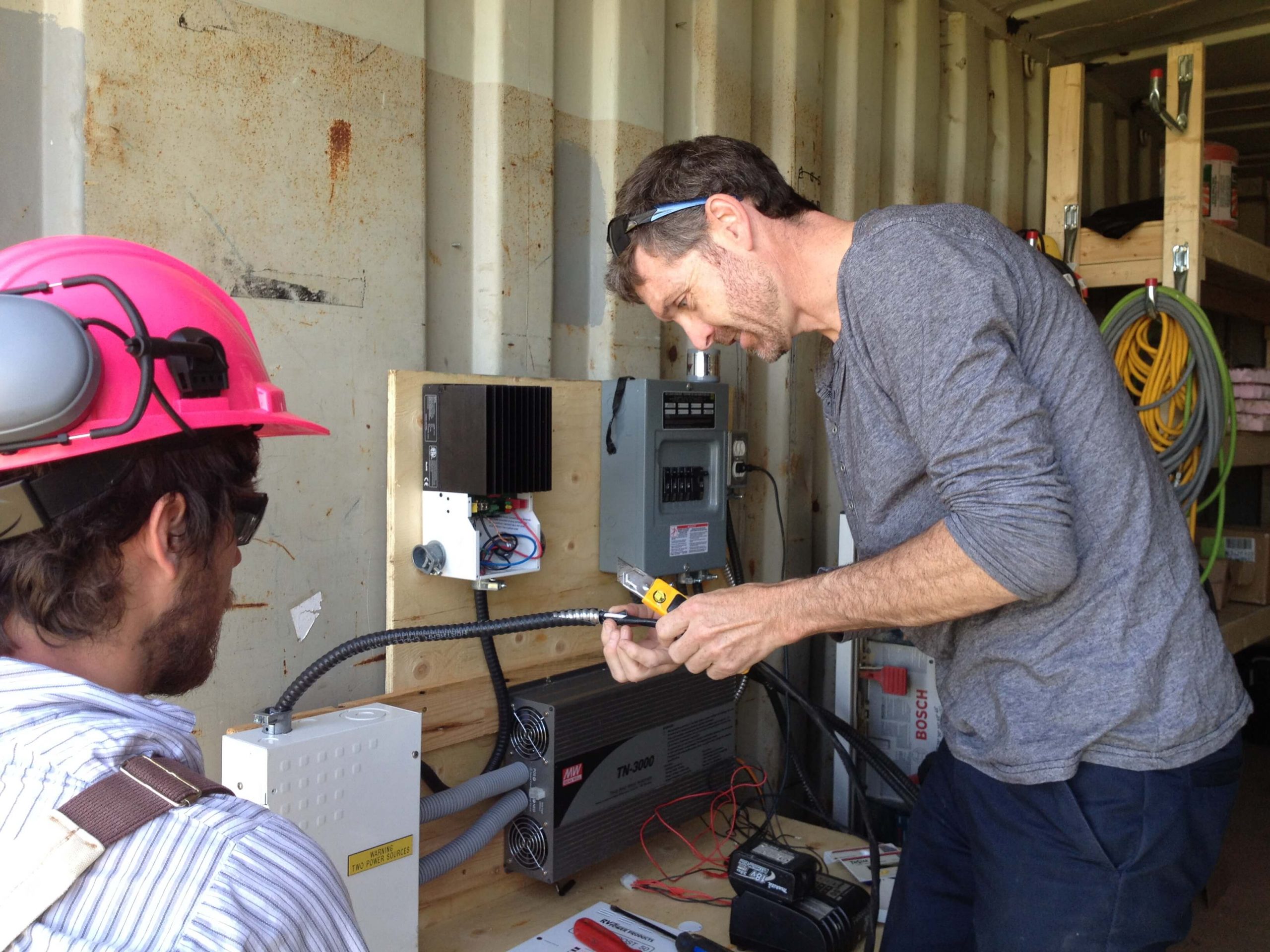Many sustainable building projects are built in places where it is difficult or impossible to access electrical grid power, and this necessitates running a gasoline or diesel powered generator to provide power for tools. Over the course of an entire building project this can add up to a lot of fossil fuel… I have records from one job that show we used 2,250 liters of gas over a five month period! Hard to be making claims about sustainable building when that much fossil fuel is being burned in the process.
Despite our project for the teachers’ union being in a very urban location, there was no accessible grid power and we did not want to run a generator again. The cost of running a temporary electrical service (including utility fees and electrician’s time) was around $2500, and then there would be charges for the power used on top of that.
We spoke with Sean Flanagan of Flanagan and Sun about a PV (photovoltaic) based system that could run our job site, and the price tag was about $3800. More than the temporary power, but once built the system could be used again and again in the future. Our clients at the Trillium Lakelands Elementary Teachers’ Union generously agreed to put the budgeted cost of temporary power toward the system, clearing the way for the Sustainable New Construction class of 2014 to be powered by renewable energy!
The system features 480 watts of photovoltaic output, and is coupled with two large deep cycle batteries and a 3,000 watt sine wave inverter to provide power to the tools. A MPPT (maximum power point tracking) charge controller is the “brains” of the system, matching the amount of charge from the panels to the needs of the batteries.
After trouble shooting through some issues with the first charge controller (wrong unit for the PV voltage), our site now runs on 100% renewable energy, without the noise and pollution and cost of running a generator. We do face some limitations… if multiple tools try to start up at exactly the same moment the breaker on the inverter will trip. On a cloudy day with the air compressor running almost constantly, we can have difficulty running other tools. But living within limited means is all part of sustainable building and living, and it’s a good lesson to be reminded of during construction.
The silence and the clean air are well worth the small sacrifices. We’d encourage other builders to consider similar systems. The system is small enough to fit in a typical tool trailer, and we’ve also known builders to carry the batteries and inverter in their trucks, using the truck’s alternator to also charge the batteries as they drive to and from the job site. If each project can eliminate the need for hundreds of liters of fossil fuel, that would be a worthwhile impact!



